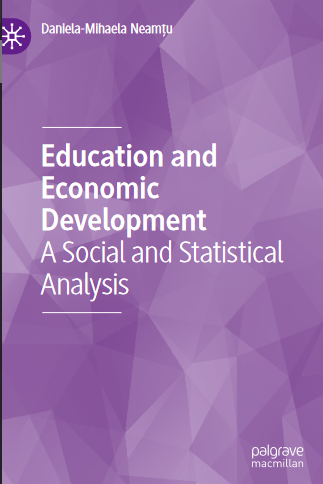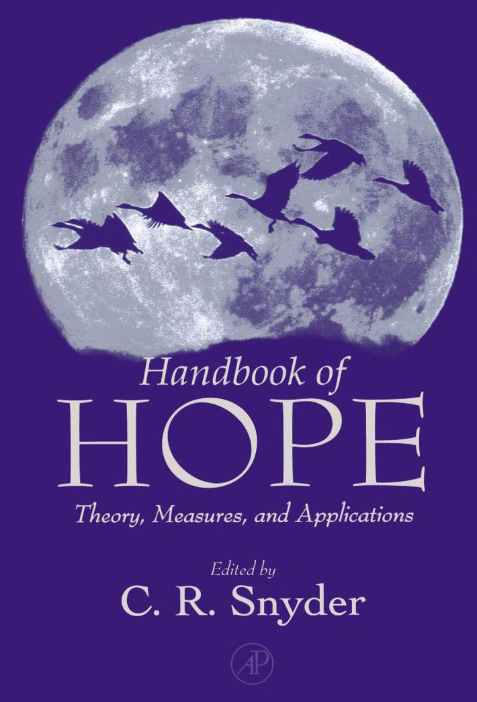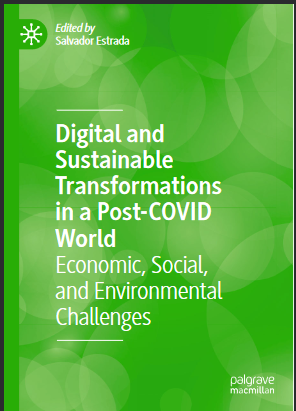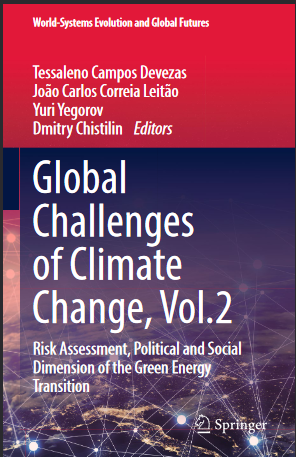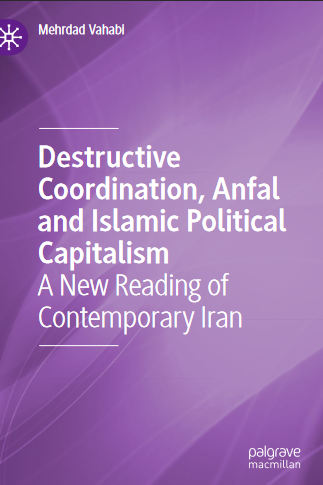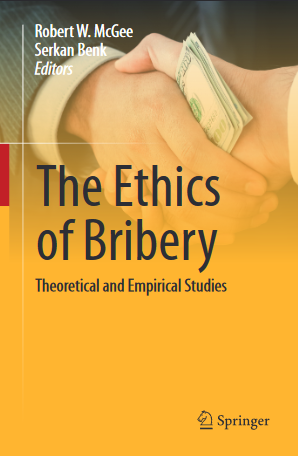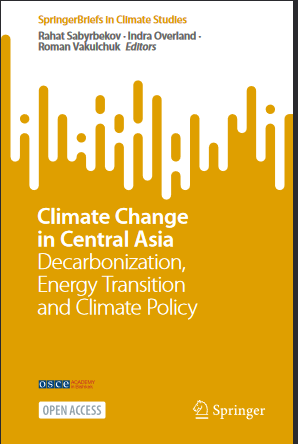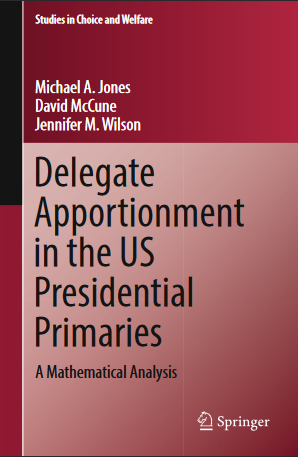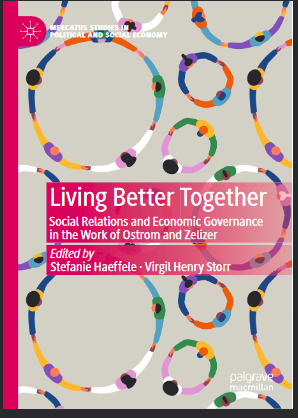موضوعات
آموزش و پرورش
ادبیات و زبان
پزشکی، دندانپزشکی و داروسازی
تاریخ و جغرافیا
داستان و رمان
دیگر
دین و فلسفه
روانشناسی
ریاضیات و آمار
سلامتی، تناسب اندام و رژیم غذایی
شیمی و پلیمر
علوم اجتماعی و حقوق
علوم زیستی و بیوتکنولوژی
فیزیک و نجوم
کامپیوتر و اینترنت
کتابهای کودکان و داستان
کسب و کار و اقتصاد
کشاورزی و دامپزشکی و غذا
معماری
مهندسی و فناوری
هنر و تئاتر
محصولات
Education and Economic Development - Original PDF
نویسندگان: خلاصه: The foundation of present-day society is based on human resources as a key element for growth and based on education for economic and social prosperity. It has become a true fact that current development relies heav- ily on education and culture as a business model, some communities hav- ing their own internalized ways, while other cultures provide for a more open society. Consequently, education in modern society has become a field of study as well as an object of study for teachers, economists, soci- ologists, and many other researchers. The progress of a society, considered from both an economic and a social perspective, is accomplished by acquir- ing knowledge allowing the human potential to be used in the best pos- sible way in various conditions. Education stands for the foundation of a free and open society, the cornerstone of a powerful and sound state. From a professional point of view, education represents the key foundation of human resource develop- ment worldwide. Globally, society itself heads continuously toward a knowledge-based economy, where education and performance are con- stantly judged against performance indexes, as well as a comparison index, among countries. Numbers and narratives lead to the transformation and valorization of strategic resources based on innovation, learning, and changHandbook of Hope Theory, Measures, & Applications - PDF
نویسندگان: خلاصه: This Handbook of Hope simply would not have happened without a small army of graduate students who, over the past decade, have come into my office one by one and suggested yetanother angle from which we could view hope. In that sense, what has come to be called hope theory has been like a gemstone that, when held to the light, sends shimmers of ideas about yet other possible implications or experiments. I have produced previous theories about reactions to personal feedback, uniqueness seeking, excuse making, and reality negotiation, hue none of chose have continued co produce the sufficiently intriguing questions to get me revved up for yet another experiment. Hope theory has been a great energizer at a time in my life when I have needed it. For the past seven years I have had a severe, unrelenting, and undiagnosed chest pain that is with me from my fim waking moments to the time th.at I slip off into sleep. Although I have been taking powerful pain killers, I think that none of those pills matches the positive effects of my getting lost in theory and research and work- ing with my students. At age 55 (by the time this book is published), I still enjoy the theory and bench science to the same degree that I did as a brand new 27-year- old assistant professor here at Kansas. And so, I have much for which to be th:.ink- ful.Digital and Sustainable Transformations in a Post-COVID World Economic, Social, and Environmental Challenges - Original PDF
نویسندگان: خلاصه: The worst of times in 50 years. Wars, pandemics, and climate change. In addition, to civil and drug wars, ethnic violence, and terrorist insurgen- cies, now we are suffering a Geopolitics war. Over a half billion infected people and 6 million passed away. Climate change worsens natural disas- ters such as floods, drought, wildfires, and hurricanes. Pain, life losses, grief and suffering, exodus, and famine. In brief a humanitarian disaster. No doubt, these conditions exercise pressure to accelerate a transfor- mation. Global warming warns of carbon dependence. Change demands large-scale investments in renewable energy, but this solution is not contradiction-free. This technology requires rare earth minerals and other scarce and non-renewable materials found in a few countries. In times of deglobalization, opening trade is demanded to enable such a transfor- mation. We are living for these conditions: severe economic disruptions, higher costs of living, energy, commodities, and food price shocks. How is the world after a persistent COVID-19 pandemic? The COVID-19 pandemic is a decreasing worry since several parts of the world are becoming endemic, but we still suffer its impacts manifested in inflation, energy prices, and supply chain disruption. Nonetheless, the outlook for the economy is perceived as dark since the conflict in Ukraine and the threat of new virus strains and variants as other zoonotic diseases. So, the 2021 economic recovery has a turndown and provokes a cautious sentimenGlobal Challenges of Climate Change, Vol.2 Risk Assessment, Political and Social Dimension of the Green Energy Transition - Original PDF
نویسندگان: خلاصه: Nowadays we observe the rise of average global temperature. There are many initiatives to combat this process, including Kyoto Protocol and Paris agreement. The general remedy against this process is decarbonization and use of renewable energy. At the moment, above 80% of used energy is produced from fossil fuels, but there are plans to cut down this share significantly in the next decades, not only in EU, but also across the globe. When we want to argue about the consequences of this process for FSU countries (now EAEU), we need to take into account both heterogeneity of physical climate change across the globe and the risks linked to international trade. The major territory of EAEU countries is occupied by Russian Federation, and its risks will be assessed separately. The next group is Central Asian countries, which is compact geographically comparing to Russia. First, we need to study the predicted risks for those countries caused by global warming. There are several processes associated with it: (a) change of average temperature and climate, (b) transition to renewable energies as a way to combat the process.Destructive Coordination, Anfal and Islamic Political Capitalism A New Reading of Contemporary Iran - Original PDF
نویسندگان: خلاصه: xi The term Anfal in the title of this book is not familiar for the general readership and its meaning cannot be easily understood by referring to English dictionaries. What is Anfal? If you launch an internet search on Anfal, you will encounter two main strands of literature. The first one relates to the Kurdish genocide by Saddam’s regime in the late eighties, and the second is about the eight Surah (chapter) of the Koran known as ‘Al-Anfal’. As Kurdistan regional government has aptly underlined, in Kurdish society, the word Anfal has come to represent the entire genocide over decades. Anfal was the term used by Saddam Hossein to describe a series of eight military campaigns conducted by the Iraqi government against rural Kurdish communities in Iraq, which lasted from February 23 to September 6, 1988.1 The campaign took its name from Surah al-Anfal in the Koran. Al-Anfal literally means the spoils of war (bounties) and was used to describe the military campaign of extermination and looting commanded by Ali Hassan al-Majid, the cousin of Saddam Hossein. As President of Iraq, Saddam Hossein frequently used religious language when describing the actions of his Ba’athist regime (see Johns, 2006), portraying Arabs as true defenders of Islam and Kurds as infidels.2Manias, Panics, and Crashes A History of Financial Crises Eighth Edition - Original PDF
نویسندگان: خلاصه: When this work first appeared, it looked back a long way to the financial crisis of the 1930s and revived interest in an old theme. Few books on the subject appeared during the several decades after World War II, following the spate of the 1930s, because the industry that produces them is anticyclical in character,1 and recessions from 1945 to 1973 were few, far between, and exceptionally mild. This work also looked forward, four years it turned out, to the developing country debt crisis of 1982. In the decades since, 1982 proved just the first of four waves of financial crises. Debtors in three, four, or more countries defaulted at about the same time and the prices of real estate and securities in these countries fell sharply. Each country that experienced a financial crisis also had a recession as household wealth declined in response to the sharp fall in the prices of securities and real estate, and as the banks became much more reluctant suppliers of credit as their own capital was depleted. The Great Recession that began in 2008 was the most severe and the most global since the Great Depression of the 1930The Ethics of Bribery Theoretical and Empirical Studies - Original PDF
نویسندگان: خلاصه: he present study is part of a much larger study that examines the ethics of bribery and tax evasion. The bribery studies consist (so far) of two books (McGee & Benk, 2023a; McGee & Benk, 2023y) and many articles and book chapters. Summaries of 28 studies (McGee, 2023a), 24 studies (McGee, 2023b), 44 studies (McGee, 2022a), and 80+ studies (McGee, 2022b) are also available. The tax evasion studies started in 1994 (McGee, 1994) and picked up speed in 1998 when the first book in the tax evasion series was published (McGee, 1998). The second book in the series was published in 2012 (McGee, 2012a). Two more books were recently added to the tax evasion collection (McGee & Shopovski, 2023a, b). Many articles and book chapters on the ethics of tax evasion have been published over the years. Summaries of many of them are available. There are sum- maries of 49 studies that used a survey template that usually consisted of 18 state- ments starting with the phrase, “Tax evasion is ethical if ...” (McGee, 2012b). Another study summarized 23 studies that used World Values Survey data (McGee, 2012c). Other studies summarize 3 studies (McGee, 2012d), 21 studies (McGee, 2022c), 35 studies (McGee, 2022d), 60+ surveys (McGee, 2022e), 70+ theoretical and empirical studies (McGee, 2022f), 100+ studies (McGee, 2022g), 80+ studies (McGee, 2022h), 34+ studies (McGee, 2022i), and 44+ studies (McGee, 2022j). Part II of the book addresses attitudes toward bribery from different religious perspectives. The first chapter in this section provides a comparative study of reli- gious attitudes toward bribery (McGee et al., 2023a). There are also chapters that report on attitudes of Christians (McGee et al., 2023b), Muslims (McGee et al.Climate Change in Central Asia Decarbonization, Energy Transition and Climate Policy - Original PDF
نویسندگان: خلاصه: This chapter provides a broad introduction to the impact of climate change in Central Asia, a region that has been experiencing a greater rise in temperatures than other parts of the world. The chapter shows how climate change represents a significant threat to Central Asia, exacerbating existing economic and environmental challenges and fueling regional tensions over resource management. Inefficient water resource management at the national level and limited regional collaboration on the management of water resources, coupled with state capacities that remain insuffi- cient to tackle climate change impacts, compound water-related tensions between the countries in the region. The chapter also shows how decarbonisation efforts in Central Asia are still in their early stages, with coal remaining a primary source of energy. Although the Central Asian countries have announced decarbonisation targets and adopted green economy strategies and programmes to reduce green- house gas emissions, a large-scale clean energy transition remains unlikely in the short term. The chapter concludes by identifying a lack of scholarship on climate change in Central Asia, which limits the development of a coherent approach to climate change mitigation and adaptation and evidence-based decision-making in the region. The chapter argues that a more coordinated approach to tackling climate change across the region is needed, requiring closer collaboration and more effective joint management of natural resources by the five Central Asian states. Finally, the chapter presents the chapters in the rest of the bookDelegate Apportionment in the US Presidential Primaries A Mathematical Analysis - Original PDF
نویسندگان: خلاصه: The purpose of this book is to examine the mathematics of the delegate allocation process in the US presidential primaries. The US presidential primaries are a series of state elections held every four years that determine the Democratic and Republican Parties’ nominees for president in the general election. Presidential candidates in each party are awarded delegates based on their shares of the vote in each state contest. At the end of the primary season, each party holds a national convention. The candidate with a majority of state delegates, after one or more rounds of voting, is selected to be the party’s nominee for president. From a mathematical standpoint, the question of how to allocate delegates is largely a problem of apportionment. Apportionment problems arise when a fixed quantity (such as a number of delegates) must be divided among several constituents (such as candidates) in proportion to some attribute (such as vote share), so that each portion is a whole number. Since delegates are individuals and cannot be divided, their allocation is a matter of apportionment. Apportionment or similar allocation problems occur at multiple stages in the delegate selection process from determining how many delegates each state receives, and how they should be divided between statewide and district delegates, to determining what happens after each primary when the delegates must be awarded to the candidates based on how well they do in the election. Apportionment has been well-studied in the context of allocating state represen- tatives to the US House of Representatives in proportion to state populations. It has also been widely analyzed for its role in proportional representation systems where party seats are awarded to parties based on the vote distribution. It is less well-known in the case of apportioning delegates in the US primaries. Thus the examination of apportionment applied to delegate allocation involves both an identification and anal- ysis of new apportionment methods as well as an evaluation of old and new criteria by which to evaluate their properties. The goal of this book is to do both. We have spent several years researching delegate allocation in presidential primaries and were inspired to write this volume because of the interesting aspects of apportionment arising in this context. The book’s vii viii Preface origin can be traced to 2016, when we observed that the 2016 Georgia Repub- lican party adopted an apportionment method for its state primary that was unique and perhaps the most interesting method we had encountered. This motivated us to investigate the methods used by other state parties, many of which are new, and to consider how the allocation of delegates is affected by elimination thresholds—the minimum levels of support required to receive delegates—and the overall structure of the state delegates selection plans in which delegates are apportioned based on vote distributions in each district and statewide. This led us also to consider how the goals of delegate apportionment differ from that of house or party apportionment— most noticeably in that the state primaries occur over time, and that the end result is not political representation but the declaration of a winner. This means that the usual criteria for evaluating apportionment need to be rethought in an effort to deter- mine what features of traditional apportionment theory are most relevant to delegate apportionment and which features are not.Living Better Together Social Relations and Economic Governance in the Work of Ostrom and Zelize - PDF
نویسندگان: خلاصه: olitical economy is a robust field of study that examines the economic and political institutions that shape our interactions with one another. Likewise, social economy focuses on the social interactions, networks, and communities that embody our daily lives. Together, these fields of study seek to understand the historical and contemporary world around us by examining market, political, and social institutions. Through these sectors of life, people come together to exchange goods and services, solve collective problems, and build communities to live better together. Scholarship in this tradition is alive and thriving today. By using the lens of political and social economy, books in this series will examine complex social problems, the institutions that attempt to solve these prob- lems, and the consequences of action within such institutions. Further, this approach lends itself to a variety of methods, including fieldwork, case studies, and experimental economics. Such analysis allows for deeper understanding of social phenomena, detailing the context, incentives, and interactions that shape our lives. This series provides a much-needed space for interdisciplinary research on contemporary topics on political and social economy. In much of academia today, scholars are encouraged to work independently and within the strict boundaries of their disciplines. However, the pursuit of understanding our society requires social scien- tists to collaborate across disciplines, using multiple methods. This series provides such an opportunity for scholars interested in breaking down the boundaries of disciplines in order to better understand the world around usآیا کتاب مورد نظر هنوز بر روی سایت قرار نگرفته است؟ جای نگرانی نیست! کافی است بر روی گزینه سفارش کتاب کلیک کرده و درخواست خود را ثبت کنید. در کمتر از چند ساعت کتاب شما را آماده خواهیم کرد.
